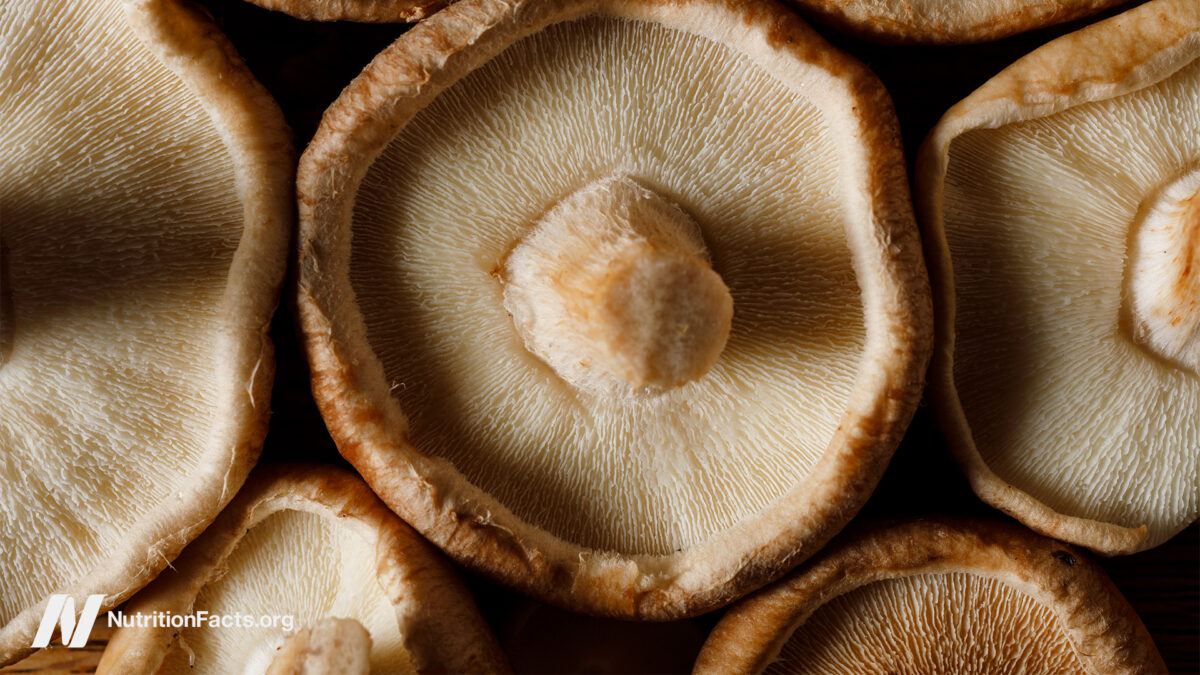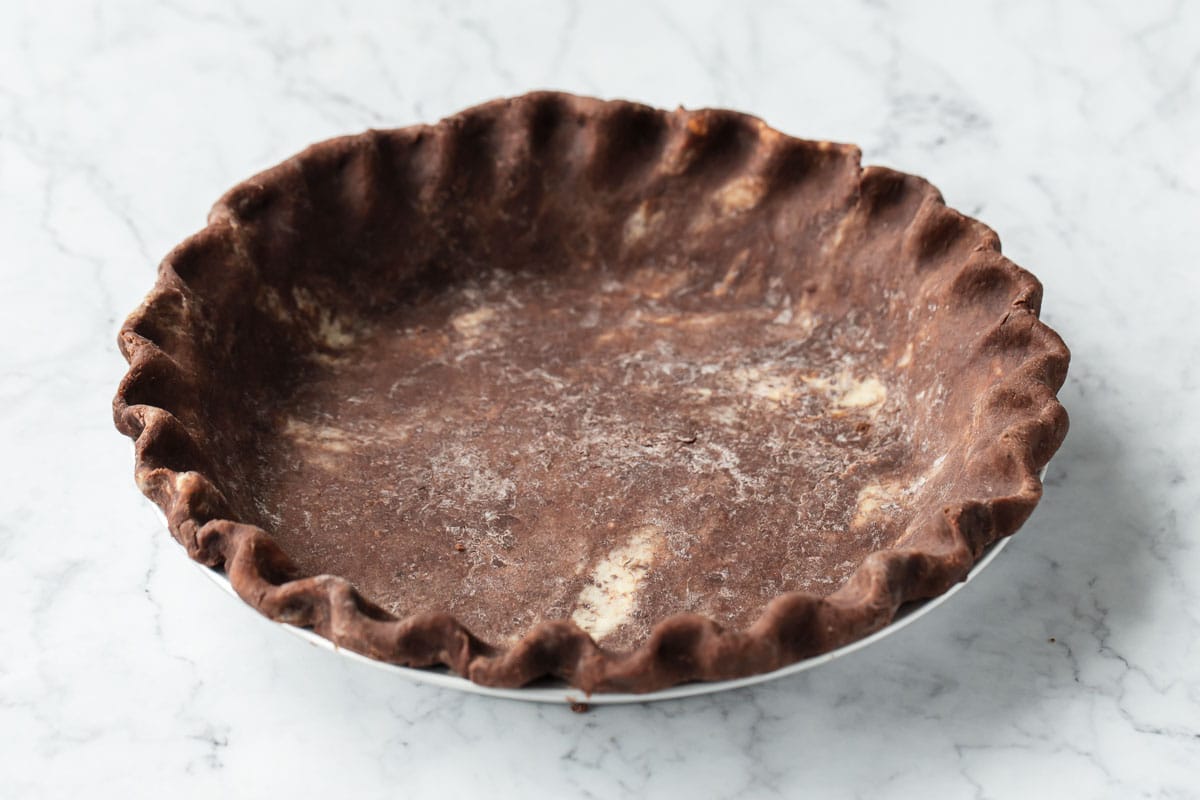What About Millet and Diabetes?
What were the remarkable results of a crossover study randomizing hundreds of people with diabetes to one and a third cups of millet every day? […]
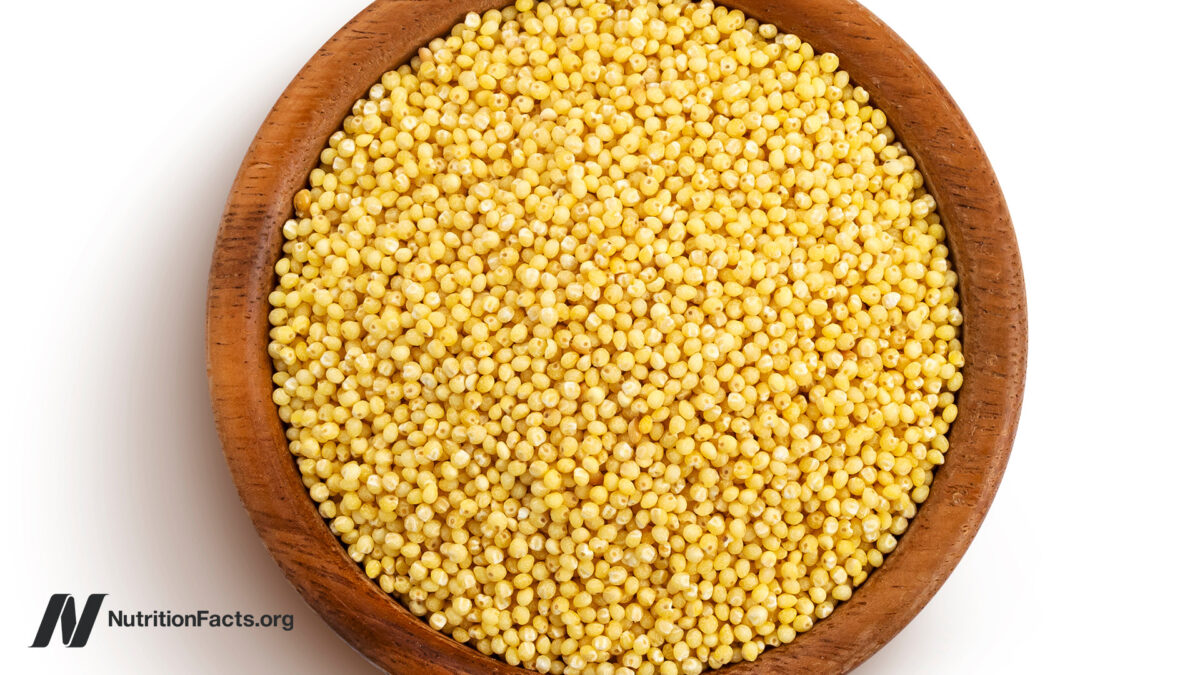
What were the remarkable results of a crossover study randomizing hundreds of people with diabetes to one and a third cups of millet every day?
How does millet come to the help of people with diabetes? A substantial portion of the starch in millet is resistant starch, meaning it’s resistant to digestion in our small intestine so it provides a bounty for the good bugs in our colon. Below and at 0:28 in my video The Benefits of Millet for Diabetes is a table showing how the various millets do. As you can see, they’re all much higher in resistant starch than more common grains, like rice or wheat, but proso and kodo millets lead the pack.
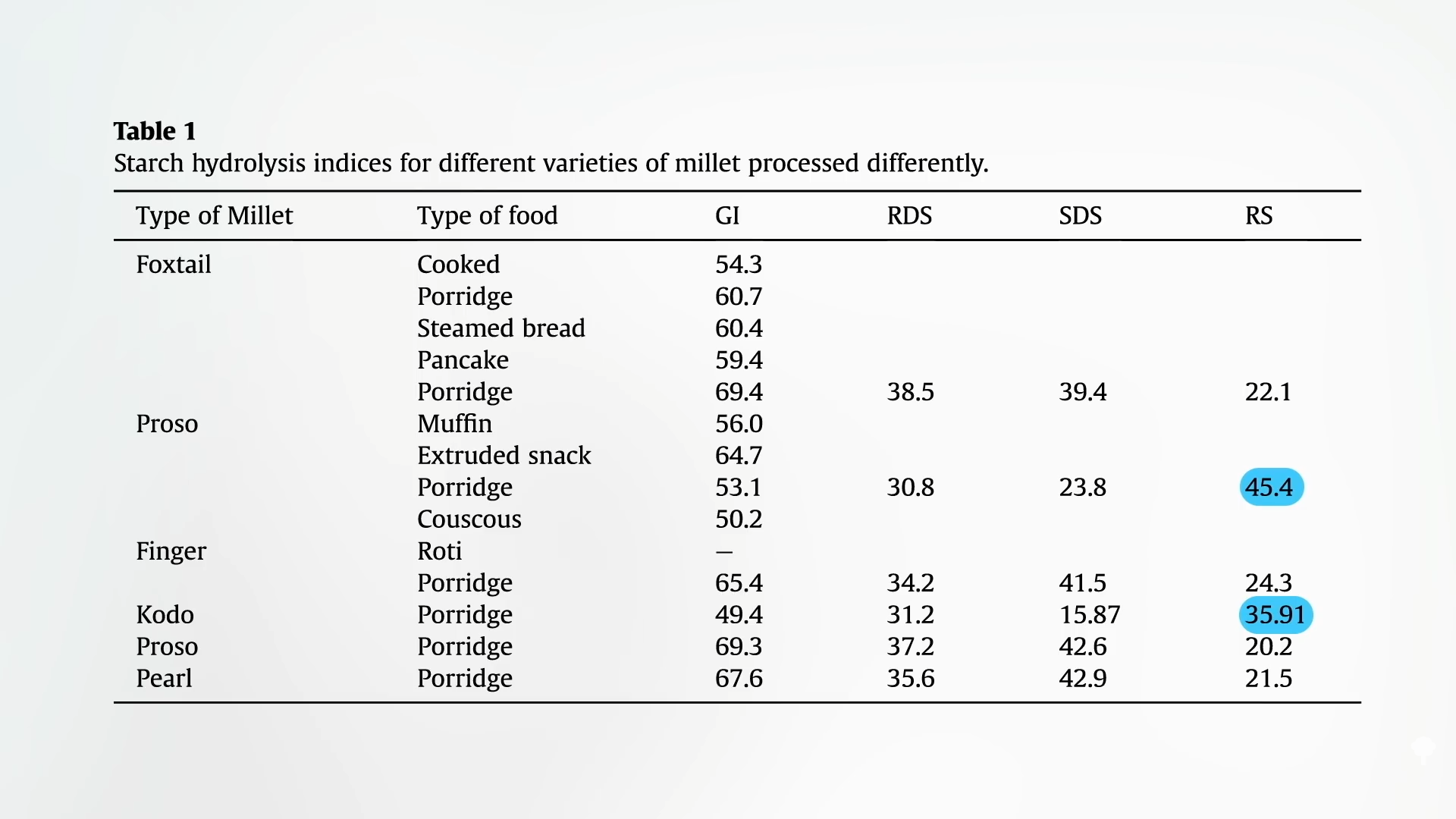
What’s going on? The protein matrix in millet not only acts as a physical barrier but also partially sequesters our starch-munching enzyme, and the polyphenols in millet can also act as starch blockers themselves.
Millet has markedly slower stomach emptying times than other starchy foods, too. When we eat white rice, boiled potatoes, or pasta, our stomach takes about an hour to digest it, before it begins to slowly release it into our intestines, and it takes about two or three hours to empty about halfway. When we eat sorghum or millet, though, stomach emptying doesn’t even start for two or three hours and it may take five hours to empty just halfway, as you can see below and at 1:22 in my video.

Note that this was the case with both a thick millet porridge and a millet couscous. “The non-viscous millet couscous meal was also equally slow in [stomach] emptying. This suggests that there is an intrinsic property” of millet itself that helps slow down the rate of stomach emptying, which should blunt the blood sugar spike. What happened when it was put to the test?
Indeed, millet caused about a 20 percent lower surge in blood sugar than the same amount of carbohydrates in the form of rice. Remember how excited I was to show you how it only took the body about half the insulin to handle sorghum compared to a grain like corn? Well, millet did even better, as seen here and at 2:07 in my video.

When a group of prediabetic individuals were given about three quarters of a cup of millet a day, within six weeks, their insulin resistance dropped so much that their prediabetic fasting blood sugars turned into non-prediabetic blood sugars, as shown below and at 2:22 in my video.
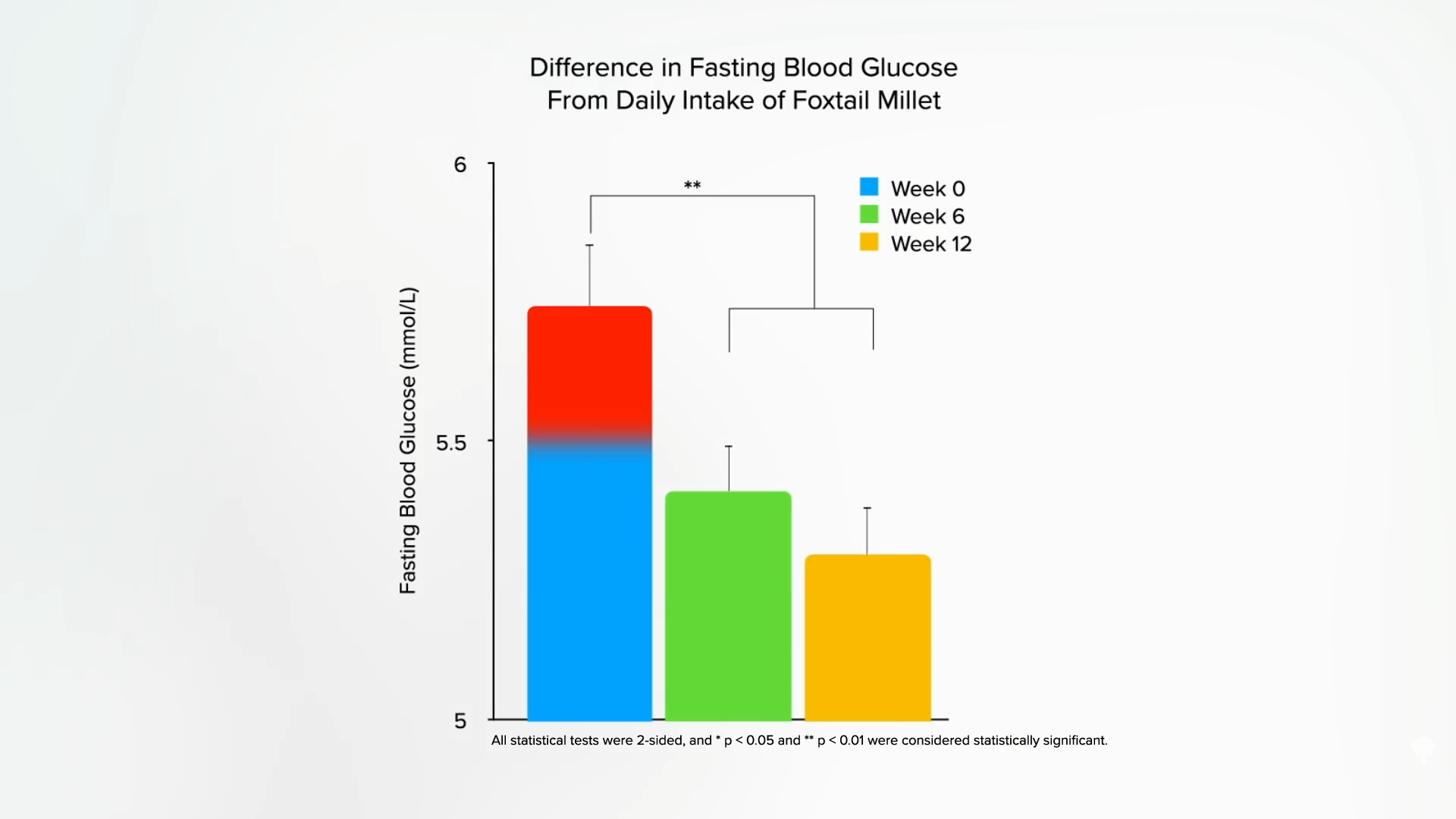
This “self-controlled clinical trial,” with the same subjects before and after, is just a sneaky way of saying it’s an uncontrolled trial. There was no control group in which participants either didn’t add the millet or added something else, and we know that just being under scrutiny in a study can cause people to eat better in other ways. So, we don’t know what role, if any, the millet itself played. What we need is a randomized, controlled, crossover trial where the same people eat diets with and without millet so we can see which works better. And here we go: a randomized, crossover study with hundreds of patients following an American Diabetes Association-type diet with and without about one and a third cups of millet every day. Researchers found that the millet-based diet lowered hemoglobin A1C levels, meaning there was an improvement in long-term blood sugar control, as well as the achievement of some side benefits like lowering cholesterol.
The target for good blood sugar control recommended by the American Diabetes Association is an A1C of less than 7. The participants started out at 8.37, but after a few months on millet, their A1C dropped to an average of 6.77, as seen here and at 3:35 in my video.

Is it just because they lost weight? No, which suggests it was an effect specific to the millet. The researchers didn’t just give them millet, though. They mixed the millet with split black lentils and spices, and we know from dozens of randomized, controlled experimental trials in people with and without diabetes that consuming pulses—beans, split peas, chickpeas, and lentils—can improve long-term measures of blood sugar control like A1C levels. So, while the researchers “concluded that millets do have a potential for a protective role in the management of diabetes,” a more accurate conclusion might be a mix of millets and lentils can be protective. The spices may have helped, too. The researchers didn’t say which spices were used, and I couldn’t get in contact with the authors, but a similar study done by one of the same researchers included about a daily tablespoon of a mixture of fenugreek, coriander, cumin, and black pepper, with a fifth spice, perhaps cinnamon or turmeric.

 Troov
Troov 








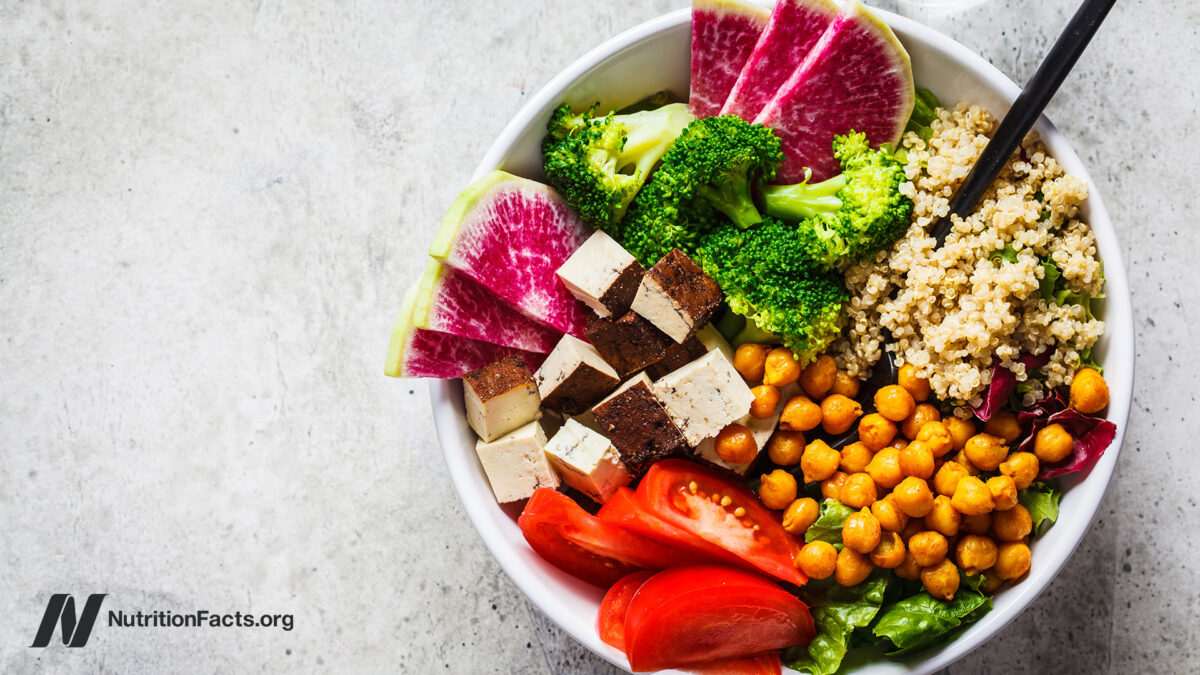










![The 2026 AI Search Benchmark Every SEO Leader Needs [Webinar] via @sejournal, @lorenbaker](https://www.searchenginejournal.com/wp-content/uploads/2025/11/1-259.png)

